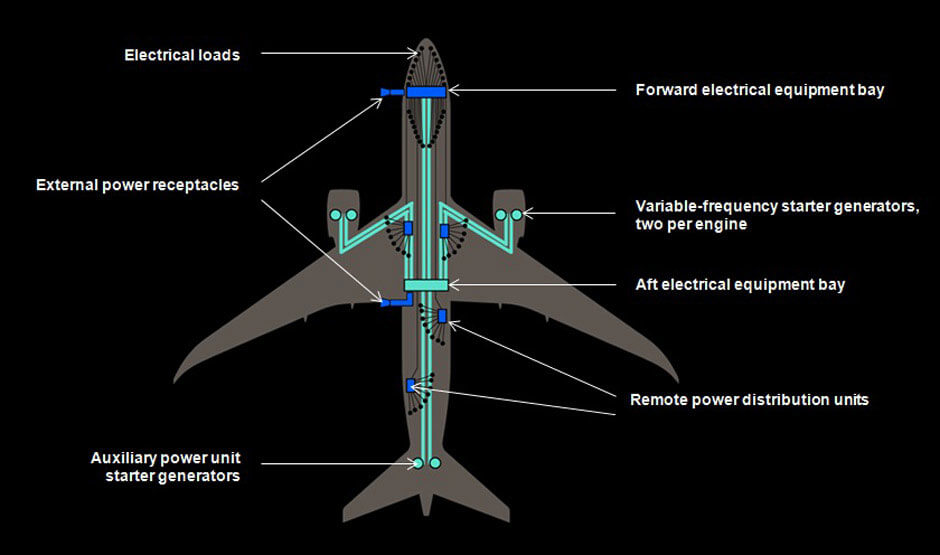




















Enter your name and email to read this book now...
Your info is secure, and I will never share your name or email with anyone.

While I briefly address this over on the FAQ page, I wanted to expand on the answer to this question, because this is another one of those questions people ask me every day.
I mean literally, EVERY DAY! I must get this question at least 2 or 3 times a day in my email.
By the way, if you have any questions or need to contact me for anything, you can do that here.
I love answering questions and helping people who are thinking about becoming aircraft mechanics, especially people who are thinking about becoming avionics technicians.
So, back to the point of this post:
That’s the simplest answer to that question.
Aircraft are filled to the brim with electronic equipment, components, and systems.
They’re also full of wiring. Some of the big aircraft, like the Boeing 787 and Airbus A380, literally contain miles of wiring.
Avionics technicians work on all types of stuff, like:
• The antennas mounted on the aircraft
• The radar and weather equipment
• Lights on both the inside and outside of the aircraft
• Electrical sensors
• Communication equipment
• Navigation equipment
Depending on the size of the aircraft, there can be thousands of electrical components that have to be serviced and maintained.

When you’re not removing or installing this equipment, as an avionics technician you will also spend a lot of time testing all of these items.
And when you’re not removing, installing, or testing things, you will spend your time actually repairing things.
Sometimes electrical components are shipped out to specialized avionics shops where avionics technicians who have specific training will fix whatever needs to be fixed. The part will then be shipped back out and reinstalled on an aircraft.
They also replace damaged wires in wire bundles, like the ones in this photo:

It takes a lot of specialized knowledge to work on all of this equipment and these systems, BUT you don’t always need a license.
There are avionics techs working right now who don’t have any type of license at all.
BUT, to make the most money you will need a license at some point.
The United States:
In the United States, many avionics technicians have an FCC GROL (Federal Communications Commission General Radiotelephone Operator License).
This license is not difficult to get once you have some basic knowledge and once you study for the tests you have to take.
Some technicians also add the Ship Radar Endorsement (R.E.) to their GROL. A technician with a GROL that includes the Radar Endorsement can work on radar systems and equipment installed on aircraft.
As with the GROL, the R.E. isn’t difficult to get.
Most Other Countries:
Most aircraft maintenance engineers (AMEs) working in countries other than the U.S. will have a Part 66 Aircraft Maintenance Licence.
AMEs who work in avionics will have a Part 66 Category B2 Licence, which authorizes them to work on electrical components and systems.
It can take much longer to get a Part 66 License than the FCC GROL.
But before you try to get a license, you need to realize this:
No matter which country you’re planning to work in, you need to make sure you follow the right steps.
Becoming an avionics technician and making really good money doesn’t have to be difficult.
Most people make a big mistake by paying for an expensive school or college program, which might not be your best option.
I can show you how to start making money right now while you’re actually working on real aircraft.
Oh yeah, and you’ll also be making good money at the same time!
Usually the emails I get on this topic go something like this:
Hey Mark, I’m thinking about becoming an avionics technician. Do I have to go to college? How much money will I make?
Just like all of the other careers I discuss throughout The Aircraft Mechanic Career, you don’t need any college degree or any type of license or certificate to begin your career in avionics.
Oh, and as far as how much money you can make...
As a matter of fact, one of my best friends is an avionics technician, and he makes even more money than I do.
Usually avionics personnel make more money than other types of mechanics (A&P mechanics, structures mechanics, composite technicians, etc.) because of the specialized skills that are required to do this type of work.
There are TONS of opportunities out there if you enter this field.
You can also make some really good money, as I mentioned a moment ago.
BUT like I told you, if you want to get into this field, there’s a right way and a wrong way...
I’m going to show you the right way. That’s why I’m here!
If you’re thinking about becoming an avionics technician or just want some more information about the career, you need to take my Aircraft Mechanic Assessment.
It only takes a few minutes and it’s the first step you need to take if you want to become an avionics technician:



Next Post:

Are Aircraft Maintenance Engineers really better than Aircraft Maintenance Technicians? Mark explores this seemingly endless debate... Read More